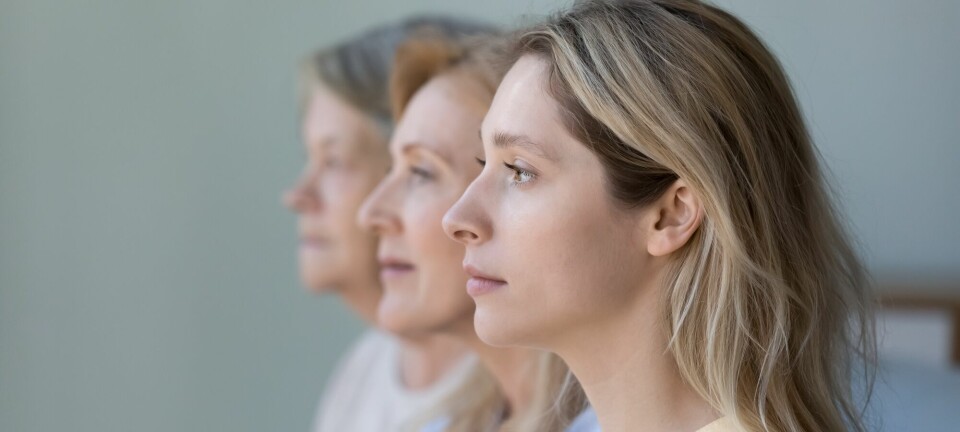
More adolescents have become lonely
– these are especially vulnerable
Why are more young people becoming lonely? Two Norwegian researchers have some possible explanations.
Do we become lonely because of the society we live in?
More adolescents in Norway are lonely than before, a new study shows. It compiles results from three surveys over a period of 24 years.
The study shows that loneliness has increased among adolescents from the first survey, in 1995-1997, to the second, in 2017-2019.
At the same time, there has been an increase in mental health problems among young people, according to other research referenced by the study’s lead author, Nayan Deepak Parlikar. This is very often associated with loneliness, she says.
More vulnerable to social pressure
About twice as many 16-19-year-olds felt lonely compared to 13-15-year-olds, according to the new study.
“Adolescence is characterised by many physical, psychological, social, and biological changes. Challenges and loneliness can manifest in different ways,” Parlikar says. She is a PhD candidate at NTNU’s Department of Public Health and Nursing.
Loneliness was particularly prevalent among girls. In the initial survey, nearly nine per cent of the girls experienced significant loneliness, but this number nearly doubled in the latest survey.
Lower self-esteem and more self-criticism
“Girls are more vulnerable to social pressure,” Parlikar says.
It is more common for girls to have low self-esteem and a tendency to be more critical when evaluating themselves, she says.
Other studies have shown that girls report more pressure to perform well in school than boys, according to Parlikar.

“These studies show that stress at school is related to loneliness,” she says.
Mobile phone use and social differences
Among all respondents, nearly twice as many felt lonely in 2017-2019 as in 1995-1997. The increase was from 5.9 per cent to 10.2 per cent.
The number would have been higher if the researchers had included those who felt lonely occasionally. Only those who felt lonely very often were included.
Parlikar and her colleagues are not sure what is causing the increase, but they have discussed possible explanations in their article.
One factor they consider is social differences in Norway.
“During the period we have studied, there have been increasing social differences,” she says.
Socioeconomic status is linked to how families function. A difficult family situation can in turn lead to stress factors in the lives of young people. This has implications for a child's development, Parlikar says.
And then smartphones came along. They might make us talk less with each other. But Parlikar does not view the use of social media as entirely negative.
Some have fared better after the smartphone
Most viewed
If you have poorer mental or physical health, the risk is greater that you isolate yourself more. There is less energy left over to spend on friendships or social activities, the researcher explains. Among both those who reported poor self-assessed mental health and those with poor physical health, loneliness increased from the 1990s to the 2000s.
However, there was a notable decrease in loneliness among people with poor mental health between 2006-2008 and 2017-2019, from 32 per cent to 27 per cent.
These, like the others in the study, have used social media more over the years.
Perhaps this has given them access to social groups that have helped them cope with loneliness, says Parlikar.
Senior researcher and psychologist Thomas Hansen at the Norwegian Institute of Public Health (NIPH) points to another possible explanation.
Lower threshold for reporting poor health?
“Immediately, I think the group that has self-reported poor mental health has changed somewhat over the years,” Hansen tells sciencenorway.no.
It could be that the relationship between mental health problems and loneliness has remained stable, but that the group reporting mental health problems actually has fewer problems now than before.
This could be due to increased openness and a lower threshold for what is defined as mental health problems, Hansen says.
Has increased quite significantly
For Hansen, the findings in the study are not surprising.
“This was something I recognised immediately, so the results are not surprising,” he says.

According to Hansen, this study fits into a larger picture that has been recognised for about ten years.
“Loneliness has increased quite significantly among adolescents and young adults, especially among girls. It goes hand in hand with the increase in mental health problems,” he says.
This is not only the case in Norway, but in Western countries in general, says Hansen.
He says it is difficult to know if there is as large an increase in mental health problems as the numbers suggest.
“The increase may also reflect that it has become easier to talk about it,” Hansen says.
Perhaps people also use more dramatic words when talking about mental health problems than a few years ago, Hansen notes. He adds that he is unsure if the same applies to loneliness.
Social media disrupts alone time
Hansen agrees with the researchers behind the study that the smartphone likely bears some of the blame.
“It takes away a lot of time that would previously have been spent on social relationships, friendships, and activities,” he says.
Secondly, it's easy to spend a long time scrolling and comparing yourself to others. Your phone can also disrupt the positive aspects of alone time, Hansen believes.
“We all need time alone to recharge and find peace,” he says.
Hansen thinks this can be disrupted by everything happening on social media. You might feel restless and inadequate.
“Others’ idealised portrayal of their lives can create increased social needs and expectations,” he says.
Some people experience a fear of missing out, or FOMO.
According to Hansen, such negative comparisons can diminish your perception of your own life, leading to feelings of inadequacy in comparison to the seemingly more fulfilling lives of others.
This, in turn, can quickly spiral into feelings of alienation and loneliness.
Reached the peak?
The findings of the NTNU study appear grim.
However, Thomas Hansen has a small glimmer of hope to offer.
“There are signs that loneliness among adolescents has plateaued. So, it might have reached its peak,” says Hansen, referring to data from Ungdata (link in Norwegian)
Reference:
Parlikar et al. Loneliness in the Norwegian adolescent population: prevalence trends and relations to mental and self-rated health, BMC Psychiatry, vol. 23, 2023. DOI: 10.1186/s12888-023-05404-5
———
Translated by Alette Bjordal Gjellesvik







































